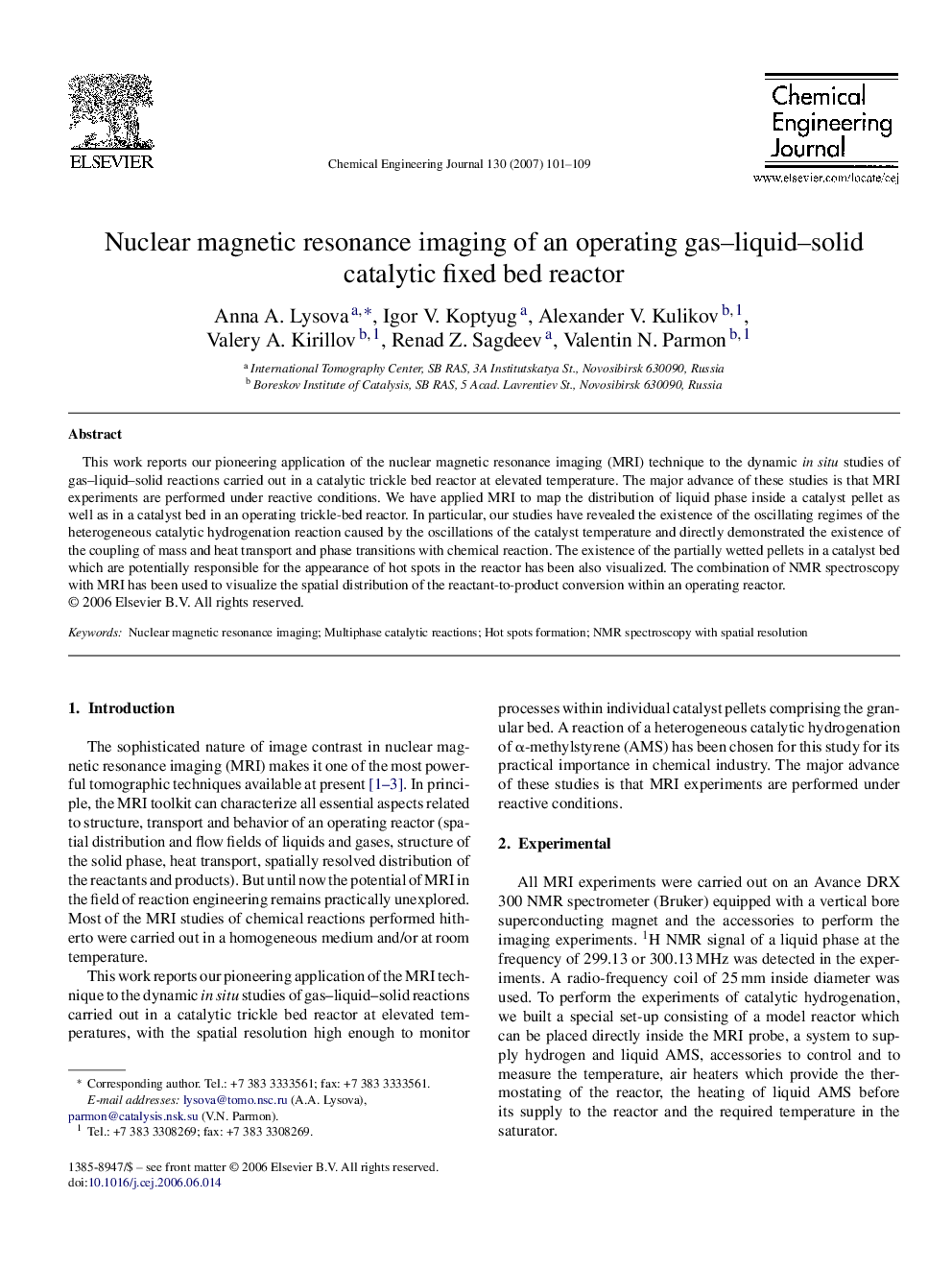| Article ID | Journal | Published Year | Pages | File Type |
|---|---|---|---|---|
| 153885 | Chemical Engineering Journal | 2007 | 9 Pages |
This work reports our pioneering application of the nuclear magnetic resonance imaging (MRI) technique to the dynamic in situ studies of gas–liquid–solid reactions carried out in a catalytic trickle bed reactor at elevated temperature. The major advance of these studies is that MRI experiments are performed under reactive conditions. We have applied MRI to map the distribution of liquid phase inside a catalyst pellet as well as in a catalyst bed in an operating trickle-bed reactor. In particular, our studies have revealed the existence of the oscillating regimes of the heterogeneous catalytic hydrogenation reaction caused by the oscillations of the catalyst temperature and directly demonstrated the existence of the coupling of mass and heat transport and phase transitions with chemical reaction. The existence of the partially wetted pellets in a catalyst bed which are potentially responsible for the appearance of hot spots in the reactor has been also visualized. The combination of NMR spectroscopy with MRI has been used to visualize the spatial distribution of the reactant-to-product conversion within an operating reactor.
